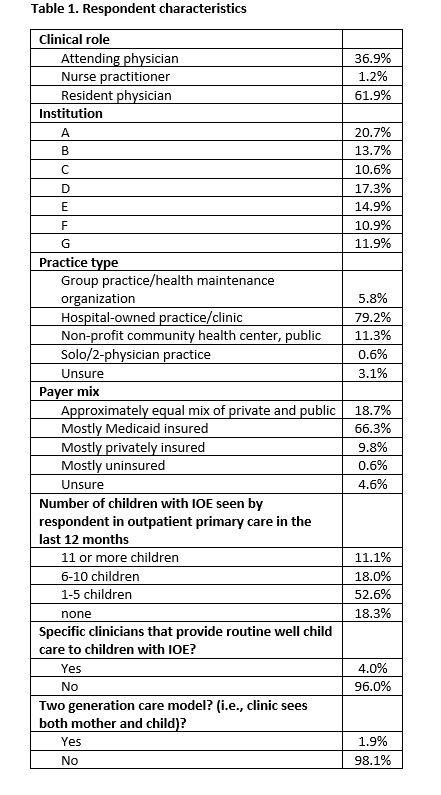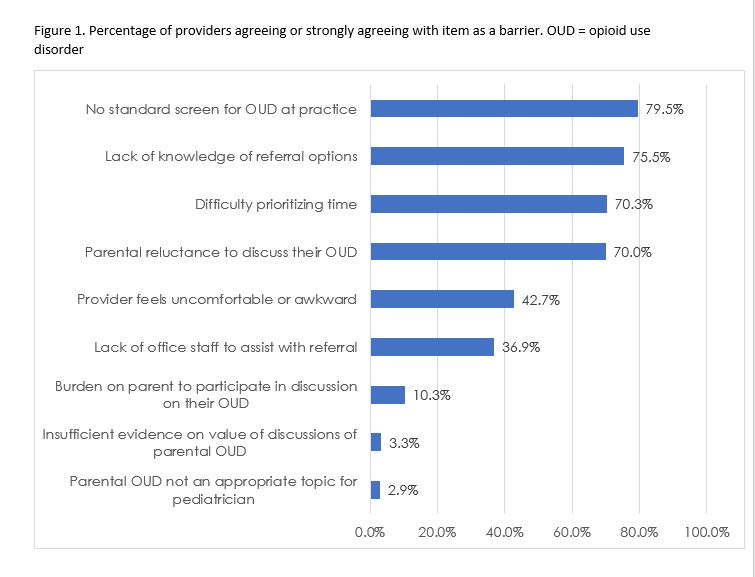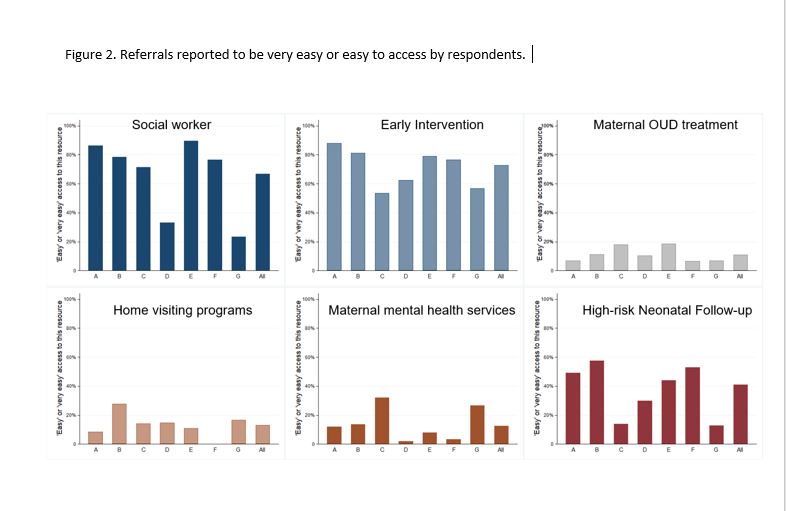General Pediatrics: Primary Care/Prevention
General Pediatrics 3
466 - Pediatric primary care of children with intrauterine opioid exposure: Current state of practice
Publication Number: 466.216

Jessica Rohde, MD, MPH (she/her/hers)
Academic General Pediatrician
Nemours Children's Health, Delaware
Wilmington, Delaware, United States
Presenting Author(s)
Background:
Opioid use disorder (OUD) among pregnant women has increased. There is a lack of clinical practice guidelines for primary care of children with intrauterine opioid exposure (IOE).
Objective: Describe current pediatric primary care practices for children with IOE and mothers with OUD
Design/Methods:
This was an IRB-approved cross-sectional, multi-site electronic survey at 7 U.S. pediatric residency programs in six states from April - June 2022. Eligible participants were pediatric residents (categorical and non-categorical), attendings, and advanced practitioners from affiliated primary care teaching clinics. The survey included items derived or adapted from existing, validated surveys. We assessed routine practices for screening and addressing parental OUD, as well as clinical management of children with IOE. Counts and percentages were used to describe responses, and Mann-Whitney U tests assessed associations between access to resources and perceived barriers to providing care.
Results:
Of 1,004 clinicians recruited to participate, 329 (32.8%) responded. Most self-identified as female (76.6%), Caucasian/white race (74.9%), and non-Hispanic (93.6%). Most were residents and practiced in an urban setting (Table 1). Most (94.5%) agreed that the opioid epidemic is an important public health issue for their community, and almost all (99.3%) reported that screening for parental substance use in primary care is important. Only 11.9% reported routine screening for parental substance use with a standardized instrument. When provided a list of potential barriers to addressing parental OUD in primary care, lack of standard screening was selected most frequently (Figure 1). Half of respondents reported that they routinely refer children with IOE to Early Intervention services (51.9%) and social work (48.8%), and ease of access to these and other services varied across institutions (Figure 2). Access to OUD treatment programs was associated with fewer reported barriers to addressing parental OUD in primary care; however, access to social work was associated with no difference in number of barriers (p-values 0.002 and 0.38, respectively).
Conclusion(s):
Pediatricians cite multiple barriers to addressing parental OUD, including lack of a standardized screening instrument, despite the importance of this issue. We observed variation in resources to support infants with IOE and their families, including access to developmental services. Findings suggest the need for specific resources and standardized workflows to increase the effectiveness of pediatric care for this population. 


